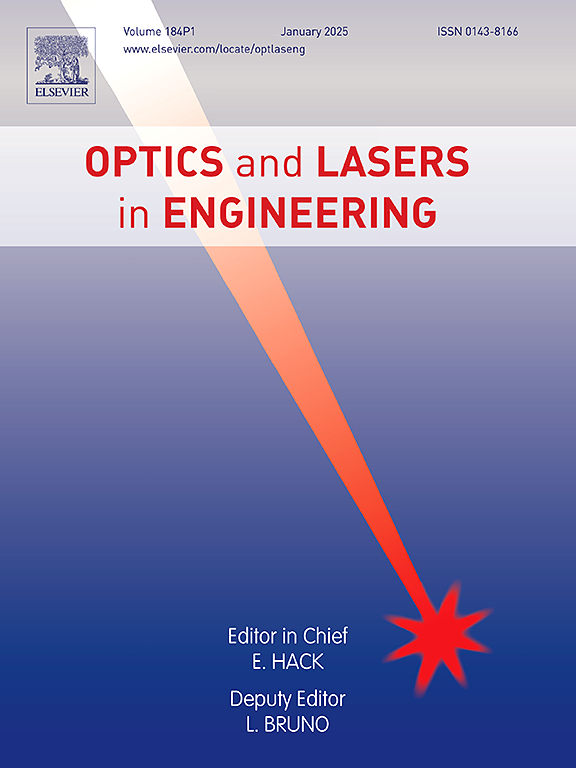Spatiotemporal synchronized temperature and deformation fields measurement at elevated temperature using a single infrared camera and high-emissivity speckle pattern
IF 3.5
2区 工程技术
Q2 OPTICS
引用次数: 0
Abstract
The synchronous measurement of temperature and deformation fields using a single infrared camera reduce the complexity of temporal and spatial synchronization between different cameras, making it a versatile approach for thermodynamic studies of materials and structures at temperatures below 150 °C. However, as temperature increases, existing methods encounter challenges such as reduced measurement accuracy of temperature due to the varying emissivity of the sample surface, and decorrelation problem due to the degradation or detachment of the speckle pattern. To address these limitations, we propose an improved method that combines a single infrared camera with stable, high-emissivity, high-temperature-resistant speckles. This method involves pre-applying specialized carriers for temperature and deformation measurements on the sample surface using air plasma spraying (APS) with high-emissivity, high-temperature-resistant materials, such as zirconia ceramics powder. The adaptive threshold binarization and Laplacian interpolation algorithm were employed to extract desired full-field temperature data from the infrared images, while the displacement field was determined through digital image correlation (DIC). The displacement data were then used to retrieve corresponding temperatures at specific calculation points on the surface. The validity and accuracy of the proposed method were verified through experiments, including thermal expansion tests on stainless steel samples subjected to heating by a torch burner and on nickel-based alloy samples under uniform heating using quartz lamps. Owing to its simplicity and cost-effectiveness, the proposed method demonstrates significant potential as a robust and efficient technique for analyzing the thermo-mechanical properties of materials and structures under extreme high temperature environments.
求助全文
约1分钟内获得全文
求助全文
来源期刊

Optics and Lasers in Engineering
工程技术-光学
CiteScore
8.90
自引率
8.70%
发文量
384
审稿时长
42 days
期刊介绍:
Optics and Lasers in Engineering aims at providing an international forum for the interchange of information on the development of optical techniques and laser technology in engineering. Emphasis is placed on contributions targeted at the practical use of methods and devices, the development and enhancement of solutions and new theoretical concepts for experimental methods.
Optics and Lasers in Engineering reflects the main areas in which optical methods are being used and developed for an engineering environment. Manuscripts should offer clear evidence of novelty and significance. Papers focusing on parameter optimization or computational issues are not suitable. Similarly, papers focussed on an application rather than the optical method fall outside the journal''s scope. The scope of the journal is defined to include the following:
-Optical Metrology-
Optical Methods for 3D visualization and virtual engineering-
Optical Techniques for Microsystems-
Imaging, Microscopy and Adaptive Optics-
Computational Imaging-
Laser methods in manufacturing-
Integrated optical and photonic sensors-
Optics and Photonics in Life Science-
Hyperspectral and spectroscopic methods-
Infrared and Terahertz techniques
 求助内容:
求助内容: 应助结果提醒方式:
应助结果提醒方式:


